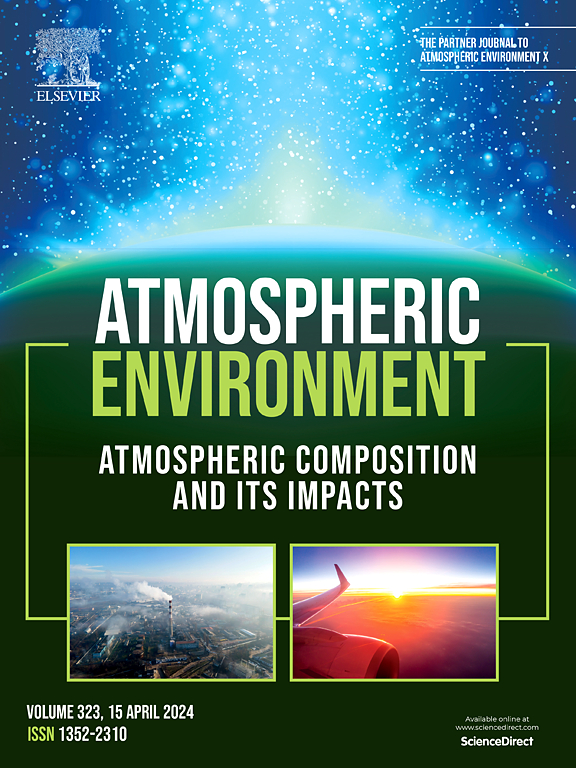Real-time contributions of different types of VOCs to O3 formation in a typical industrial park: capturing features at hourly resolution
IF 3.7
2区 环境科学与生态学
Q2 ENVIRONMENTAL SCIENCES
引用次数: 0
Abstract
Owing to a high nonlinear dynamic relationship between the precursors of NOx-VOCs and O3 formation in actual atmospheric conditions, traditional approaches—such as empirical kinetic models and air quality models—struggle to accurately quantify the hour-scale relative contributions of VOCs to O3 production. Chemical industrial parks have become a critical challenge for ozone pollution control due to their high variability in emission intensities and types. This study aims to elucidate the real-time, hourly-scale relative contributions of alkanes, alkenes, aromatic hydrocarbons, and OVOCs to O3 formation. By integrating Coupled Detrended Fluctuation Analysis (CDFA) with the Ozone Formation Potential (OFP) model, this research analyzes 12 months of VOC composition data collected in 2023 from a chemical industrial park. OFP analysis reveals that the contributions to O3 formation followed an order of aromatics > OVOCs > alkanes > alkenes during non-O3 pollution periods, which was consistent with the results from O3 pollution days. A different trend was found from the results of CDFA analysis, with an order of aromatics > OVOCs > alkenes > alkanes. Importantly, evidence from the OFP not only verified the high effectiveness of the CDFA method, but also successfully revealed the spatial and temporal evolution characteristics of VOC contributions with different types. This study pioneers a novel application of CDFA, enabling precise quantification of the real-time contributions of various VOC species to O3 formation. By significantly enhancing the resolution of VOCs relative contributions to O3, this research offers an effective strategy for mitigating complex air pollution. The findings provide a robust framework for improving pollution control measures.
典型工业园区不同类型VOCs对O3形成的实时贡献:逐时捕获特征
由于在实际大气条件下,NOx-VOCs前体与O3形成之间存在高度非线性的动态关系,传统方法(如经验动力学模型和空气质量模型)难以准确量化VOCs对O3生成的小时尺度相对贡献。化学工业园区由于其排放强度和类型的高度变异性,已成为臭氧污染控制的关键挑战。本研究旨在阐明烷烃、烯烃、芳烃和挥发性有机化合物对O3形成的实时、小时尺度的相对贡献。本研究将耦合去趋势波动分析(CDFA)与臭氧形成势(OFP)模型相结合,对某化工园区2023年12个月的VOC组成数据进行分析。OFP分析表明,对O3形成的贡献顺序依次为芳烃;OVOCs祝辞烷烃比;非O3污染期的结果与O3污染日的结果一致。与CDFA分析结果有不同的趋势,依次为芳烃;OVOCs祝辞烯烃比;烷烃。重要的是,来自OFP的证据不仅验证了CDFA方法的高有效性,而且成功地揭示了不同类型VOC贡献的时空演化特征。本研究开创了CDFA的新应用,能够精确量化各种VOC对O3形成的实时贡献。通过显著提高VOCs对O3相对贡献的分辨率,本研究为缓解复杂的空气污染提供了有效的策略。研究结果为改善污染控制措施提供了一个强有力的框架。
本文章由计算机程序翻译,如有差异,请以英文原文为准。
求助全文
约1分钟内获得全文
求助全文
来源期刊

Atmospheric Environment
环境科学-环境科学
CiteScore
9.40
自引率
8.00%
发文量
458
审稿时长
53 days
期刊介绍:
Atmospheric Environment has an open access mirror journal Atmospheric Environment: X, sharing the same aims and scope, editorial team, submission system and rigorous peer review.
Atmospheric Environment is the international journal for scientists in different disciplines related to atmospheric composition and its impacts. The journal publishes scientific articles with atmospheric relevance of emissions and depositions of gaseous and particulate compounds, chemical processes and physical effects in the atmosphere, as well as impacts of the changing atmospheric composition on human health, air quality, climate change, and ecosystems.
 求助内容:
求助内容: 应助结果提醒方式:
应助结果提醒方式:


